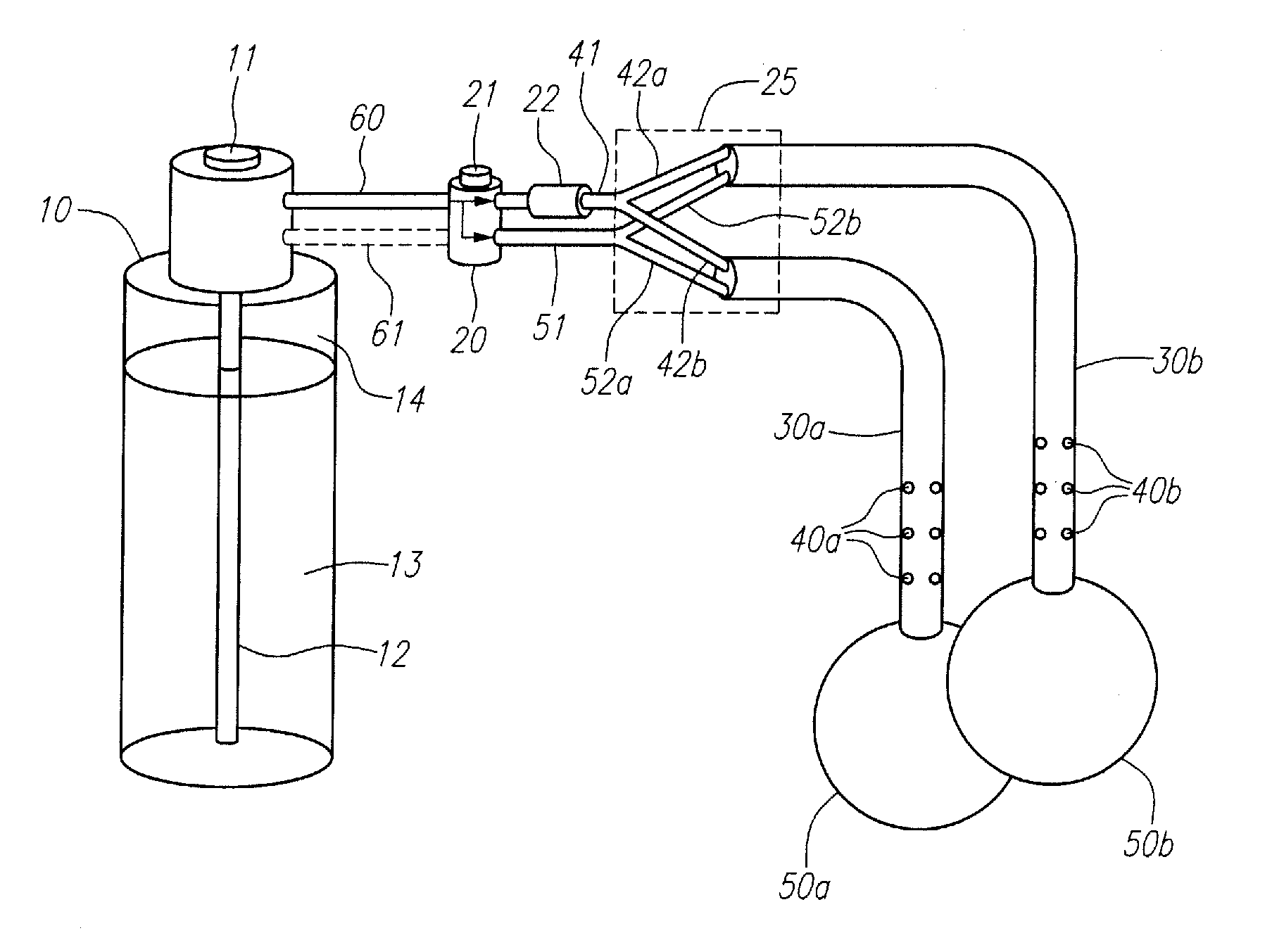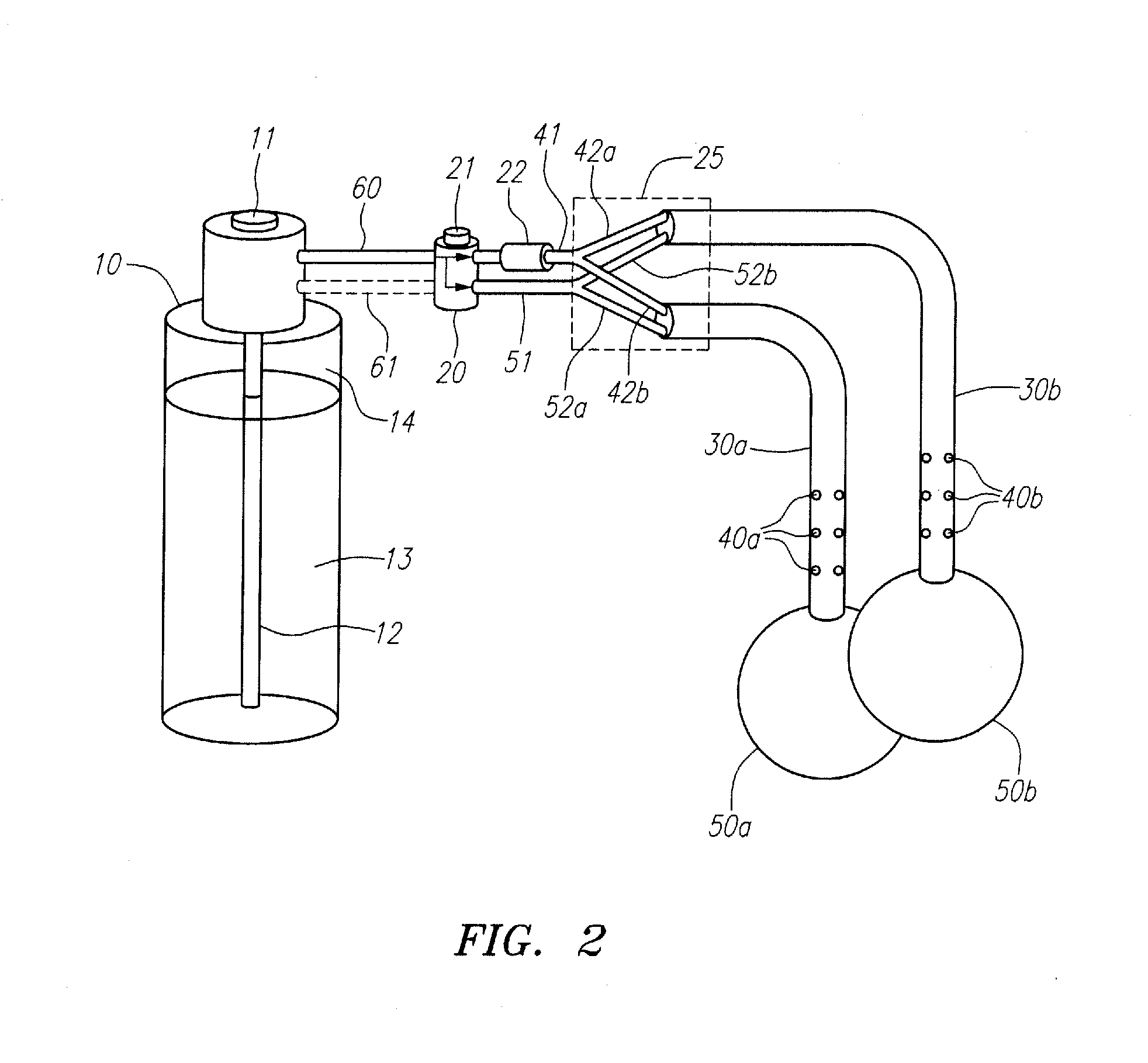Devices for cooling the nasal cavity
a technology of nasal cavity and cooling device, which is applied in the direction of contraceptive devices, dilators, respirators, etc., can solve the problems of severe cardiac performance depression, neurological deficit to irreversible damage, and patients experiencing cerebral ischemia often suffering from disabilities, etc., to achieve the effect of extending the cooling tim
- Summary
- Abstract
- Description
- Claims
- Application Information
AI Technical Summary
Benefits of technology
Problems solved by technology
Method used
Image
Examples
Embodiment Construction
[0027]Described herein are devices and methods for delivering, from a pressurized source, a fluid that evaporates in the nasal cavity to provide cerebral and or systemic cooling. The approach is a self contained methodology which is designed for emergent care at the site of the injury. Essentially, this process provides a device and method for rapidly administering therapeutic hypothermia in an out-of-hospital setting, such as by emergency or ambulance personnel by developing an endothermic reaction within the nasal pharyngeal space, a mini-internal refrigeration unit. This approach eliminates the need for external refrigeration units, and large ventilation units which are not portable.
[0028]The device includes at least one nasal catheter in fluid communication with a pressurized fluid source for delivering a liquid spray of the fluid, which has a boiling point equal to or less than body temperature. In some embodiments, the device includes two nasal catheters such that one nasal ca...
PUM
| Property | Measurement | Unit |
|---|---|---|
| boiling point | aaaaa | aaaaa |
| boiling point | aaaaa | aaaaa |
| temperature | aaaaa | aaaaa |
Abstract
Description
Claims
Application Information
 Login to View More
Login to View More - R&D
- Intellectual Property
- Life Sciences
- Materials
- Tech Scout
- Unparalleled Data Quality
- Higher Quality Content
- 60% Fewer Hallucinations
Browse by: Latest US Patents, China's latest patents, Technical Efficacy Thesaurus, Application Domain, Technology Topic, Popular Technical Reports.
© 2025 PatSnap. All rights reserved.Legal|Privacy policy|Modern Slavery Act Transparency Statement|Sitemap|About US| Contact US: help@patsnap.com



